Industrial air coolers are a great need in high mild zones where heat and humidity make working conditions unbearable. The need is more noteworthy in production units like manufacturing plants, distribution centers, thermal plants. A hot and humid environment will lead to low production performance of an employee. An air cooler like desert coolers won’t just cool a working environment yet, in addition, emit new clean air to its surrounding. An Industrial cooler does give comfort as well as is decent business speculation for improving productivity.
Most modern air coolers like desert coolers depend on innovation that has been studied the climate of humid and hot areas to guarantee maximum performance. Depending on the Evaporative techniques, industrial coolers can likewise be named as evaporative coolers.
There are even substantial large cooling units that highlight large water tower frameworks that help the cooling limit of the cooler.
Nowadays, Innovation has introduced the eco benevolent coolers that transmit fewer Chlorofluorocarbons into the atmosphere. The outcome is low carbon discharge, water, and energy preservation highlights. It makes well for a business to introduce a cooler as opposed to a focal cooling unit predominantly as a result of low power utilization and additionally enhanced cooling which gives cleaner decongested air because of its dehumidifier working in the cooler.
An industrial cooler will highlight an extensive water tank to store water. For better water protection, an eco well-disposed air cooler will have a bigger capacity limit and use water assets to the greatest without wastage. The cooler will retain warmed air into its framework which is gone through the water and cooling media. It is an area where the actual cooling framework happens where heat and dampness are absorbed and evaporated. The subsequent cool air is extinguished of the framework with the assistance of ground-breaking engine driven fans. The channeling framework conveys chilly dampness, water, and air all through the cooler. Cooled air discharged from a swamp type cooler has the ability to decrease temperatures somewhere near 30 degrees. The quick cooling framework works superior to anything a cooled which takes for a spell till the air is cooled. The innovation in modern coolers and desert coolers depends on such dissipating frameworks to give better outcomes. Also, the cooling region of an air cooler is more extensive than that of an AC. Modern coolers use cooling media innovation which includes a cooling cushion comprising of water blended with a coolant.
Highlights Of an Industrial Cooler as Compared To Air Conditioners.
- Durability
- Wide Area Inclusion
- Provides Faster Cooling Solution
- Low Maintenance
- Eco-Friendly
- Less Consumption of Energy
- Delivers natural air as compared to stale air from an AC
Types of Industrial Air Cooler
1.External Evaporative Coolers
Installed Evaporative Coolers are mostly used for huge industrial or commercial settings and operate by displacing warm air into the outside. Industrial air coolers include wall-mounted or window air cooler.
Pros of External Evaporative Coolers
★ Cost-effective operation
★ Covers larger areas than portable mobile coolers
★ Cools outside air, which already has lower temperatures than indoor air
2.Portable Evaporative Coolers
Portable Air cooler is also known as Evaporative Coolers. One kind of industrial evaporative air cooler. This can be used more in a commercial area like garages and warehouses. These are most applicable in another outdoor area like patios.
Pros of Mobile Evaporative Coolers
★ Quite cost-effective
★ No installation required
★ Compact and very portable
How much water is required for an Industrial Cooler?
The amount of water cooler uses depends on three factors:
Size of the Unit:
The smaller unit will consume less water. For instance, A system that is below 100 watts or 500 CFM requires less than 4 liters per hour. The bigger unit may require 20 gallons.
Combination of Humidity and Heat:
Generally, on a dry day, the system will require more water to give an increased cooling solution.
The drain valves:
A drain valve will facilitate recycle water to be drained out, and freshwater is used. The recycled water is drained from the cooler because it prevents the mineral deposits accumulation which causes damage and corrosion. The continuous drain will result in 50% more water use whereas when it rained intermittently, additional water can be decreased to 10%.

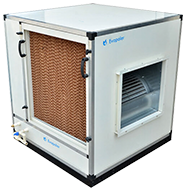

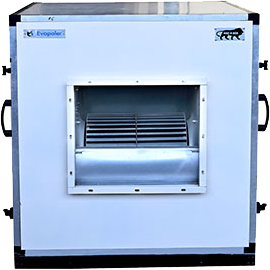
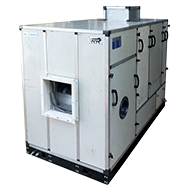
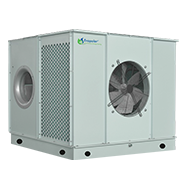
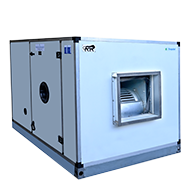
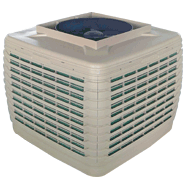


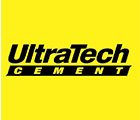



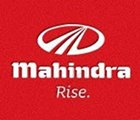









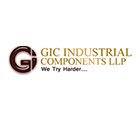



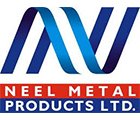

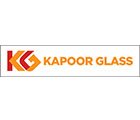


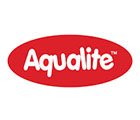





 Download Brochure
Download Brochure  Customer Care
Customer Care